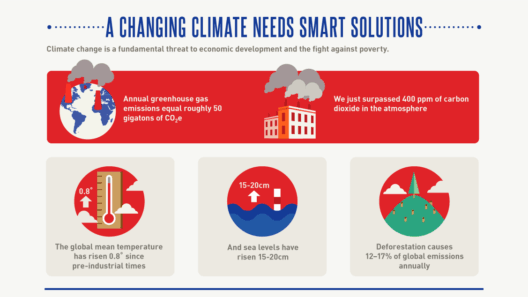India’s climate is akin to an elaborate tapestry, woven from an intricate interplay of geographical features, topographical varieties, and climatic phenomena. Stretching over vast territories, the subcontinent encompasses a multitude of climatic zones, ranging from the frigid heights of the Himalayas in the north to the sultry tropics in the south. This blend produces a milieu so rich and diverse that to speak of a single Indian climate would be to overlook the sublime characteristics that set each region apart.
The northern precincts of India are dominated by the majestic Himalayas, a formidable barrier that shapes not only the climate but also the culture of the region. As the mighty mountains rise to piercing altitudes, they impose a distinct climate characterized by cold winters and short, temperate summers. The snow-capped peaks and glacial meltwaters usher in a springtime bounty, offering erstwhile frigid locales a chance to flourish with unique biodiversity. Yet, these high-altitude regions are also susceptible to the wrath of climate change, manifesting in erratic rainfall and glacial retreat, which threaten the delicate ecosystems that have persisted for centuries.
Descending from the affluent heights, one encounters the vast Indo-Gangetic Plain, where the climate shifts dramatically. This verdant expanse experiences a subtropical climate, with hot summers that stretch into languorous, monsoon-laden afternoons. Monsoon rains breathe life into the parched earth, transforming it into a patchwork of flourishing fields that feed millions. The rains, however, are a double-edged sword; while they nurture agriculture, they also provoke the ecological strain by triggering flooding, erosion, and the salination of soil. Thus, even here, the climatic dichotomy teeters precariously between nourishment and devastation.
Venturing further south, the transition is palpable as the climate morphs into the tropical realm. States such as Kerala and Tamil Nadu exhibit a humid subtropical climate, resulting in lush green landscapes and perennial rainfalls, especially during the monsoon seasons. The tropics reveal themselves in their full glory: fragrant spice plantations, vibrant festivals, and a rich diversity of flora and fauna that thrive under the warm sun. The omnipresent coastline nurtures a unique marine ecosystem, sustaining livelihoods and cultural practices intertwined with the sea. Notably, these regions also face mounting challenges from rising sea levels and unpredictable weather patterns—all exacerbated by the overarching specter of global warming.
Then, as one proceeds toward the arid expanses of Rajasthan, an architectural marvel forms an evocative juxtaposition against the surrounding aridity—a sea of golden sands. The Thar Desert epitomizes the extremes of the Indian climate, where blistering summers yield to stark winters. While the desolate beauty reveals nature’s artistic prowess, the inhabitants here have adapted remarkable techniques for survival, including the storage of water and the cultivation of drought-resistant crops. Such regions symbolize human resilience, yet they too are experiencing the quaking effects of climate change, as shifting weather patterns disrupt traditional lifestyles and agricultural practices.
In contemplating India’s climate, one cannot ignore the notion of the monsoon, a symphony of nature that orchestrates life across the subcontinent. This annual phenomenon, characterized by the southwest winds that carry moisture-laden clouds, imbues vast regions with life-giving water. The anticipation builds as the parched earth eagerly awaits the deluge, transforming aridity into abundance. Yet, this monsoon dance is increasingly erratic; delayed arrival, intensified precipitation, and severe droughts punctuate the changing rhythms, highlighting the need for climate adaptation strategies among farmers and communities.
As diverse as India’s climate is, it also presents a distinctive challenge: the necessity of sustainable practices amid the evolving environmental landscape. The disparate climatic conditions across the nation require a multifaceted approach to manage natural resources effectively. From encouraging sustainable agricultural practices that shield soil integrity in the Indo-Gangetic Plain to promoting alternative water management techniques in the arid deserts, the solutions are as varied as the regions they serve.
Moreover, urbanization creates a unique set of challenges as cities grapple with the ‘urban heat island’ effect, exacerbating the already intense heat experienced during the summers. Metropolises like Mumbai and Delhi are particularly vulnerable, enduring a juxtaposition of economic prosperity and environmental distress. Urban planning must therefore embrace eco-friendly infrastructure, manage waste innovatively, and prioritize the integration of green spaces that enliven city landscapes.
Ultimately, the climate of India is a kaleidoscope—a vibrant spectacle of contrasts that beckons travelers and researchers alike. Each region, with its unique nuances and idiosyncrasies, contributes to the overall portrait of a nation at the crossroads of tradition and modernity, resilience and vulnerability. Understanding this intricate interplay is indispensable as the nation navigates the complexities posed by climate change, striving not only for survival but thriving amid adversity. The echoes of each climatic zone should serve as a clarion call to action, urging a collaborative push towards sustainability that harmonizes human activity with the natural world, ensuring that the rich tapestry of India’s climate continues to inspire for generations to come.







